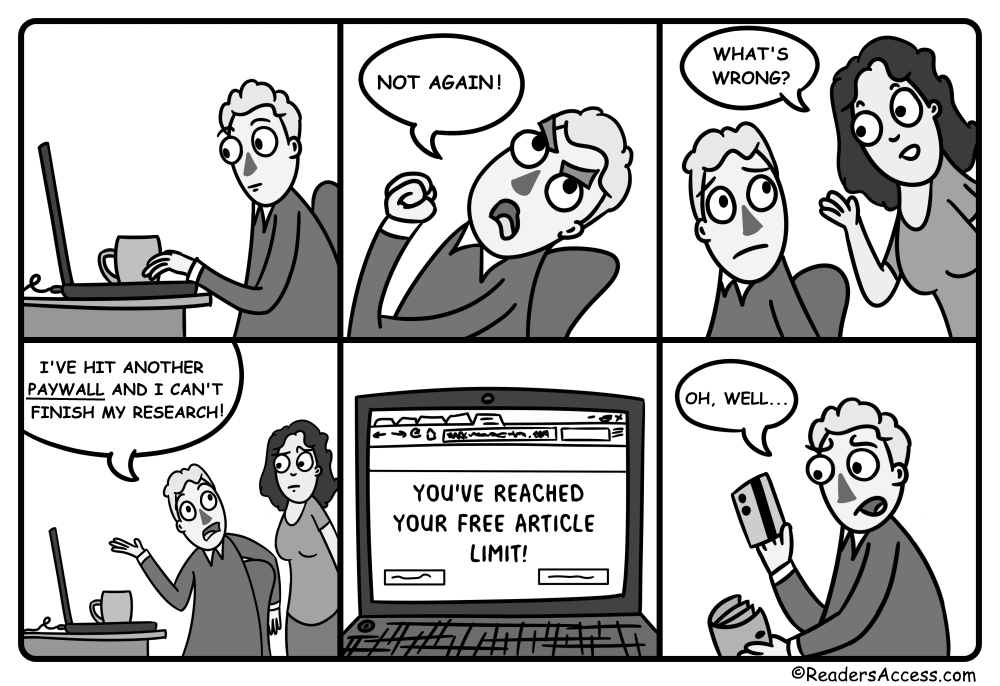By Readers Access Editor
Recently, with paywalls popping up all over the internet, a new online service, Readers Access, is promising to help readers all over the globe access the news and articles they need when they want and at ridiculously low cost.

It is predicted that Reader Access services are going to be ridiculously inexpensive. It will be much cheaper than the cost of separate subscriptions when bought separately
However, it is well worth noting, Readers Access developers are not done implementing the service yet. Luckily for us they have provided a form, which if filled and mailed to their premises, will let readers keep track of the progress and know exactly when service is ready.
Simply fill out this form and send it to us.
Thank you for your interest, !
We will keep in touch and we will let you know as soon as we are ready.
By clicking on "Keep Me Updated" above, you agree to our terms of service.
Merriam-Webster: pay·wall | noun | \ˈpā-ˌwȯl\
A system that prevents Internet users from accessing certain web content without a paid subscription
The first paywalls were introduced in the mid 2000s. Since then, many websites have created paywalls to try to increase revenue and compensate for the decline of printed subscriptions and advertisement revenue. Early paywalls failed to generate revenues forecasted or alienated substantial portions of their online readers which resulted in ad revenue loss. Subsequently, many paywalls were taken down; such as "New York Times Select" in 2007, two years after it was created and The Atlantic's in 2008 after being up less than a year. However, since the early experiments of the 2000s, paywalls have evolved into what is now known as "soft" or "porous" paywalls. Such paywalls allow readers to enjoy a limited number of articles before asking them to subscribe.
One could argue that paywalls limit the free flow of information on the Internet. Also, a paywall prevents equal access to information, since not everyone can pay for subscriptions. At the same time, without adequate revenue
to compensate reporters, writers and editors for their efforts, it would nearly be impossible for them to continue writing at all.
Today, many popular newspapers and magazines have paywalls, including New York Times, The Economist and Washington Post, just to name a few. As the advertisement revenue shrinks and more of us stop reading printed material, we can only expect that more websites
will continue to put up paywalls.
Unfortunately, for all but the very rich, it would be impossible to keep up with the many paywalls out there and their subscriptions costing anywhere between $5 to $20 per month. Readers Access has been one of the early observers to realize thus problem and have been working with news outlets and magazines with online presence to solve it.